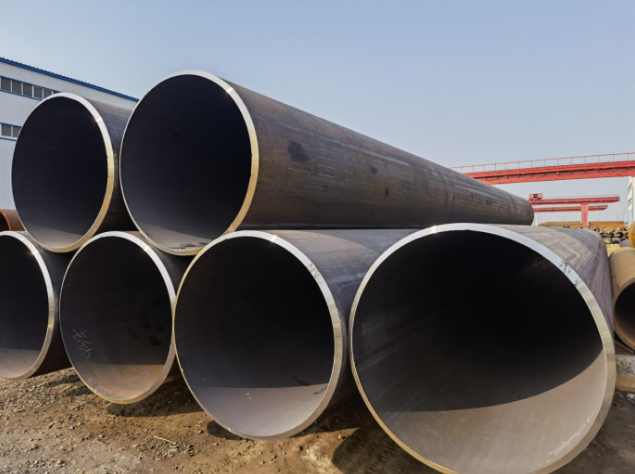
Elimination of Scratches on the Surface of Welded Pipes
The welded pipe using roll forming requires the strip to be bent into a circle transversely. This is achieved by deforming the strip by a series of rolls with different grooves. Each pair of rolls rotates at a certain speed, but the linear velocity of the roll surface is different due to the radius of rotation. However, the difference in linear speed makes the sliding friction between the strip and the forming roller the root cause of the scratches on the surface of the welded pipe.
Most welded pipe mills adopt the horizontal forming method. For this mill, the active roll bottom diameter of the roughing roll, guide ring roll and sizing roll is considered to be the driving diameter, and the linear velocity of these roll bottom diameters is basically equal to the conveying speed of the strip. Due to the different radius of rotation, the roll edge of each roll makes the relative sliding friction between the strip and the roll surface large, resulting in surface scratches.
The friction force affects the surface quality, and the friction force will cause scratches. When the friction force increases, the positive pressure on the strip increases, and the deformation of the strip increases, which causes the roller to strain the strip and produce surface scratches.

Reasonable roll design and processing:
1. Use floating flange rollers
In order to reduce the relative sliding between the strip and the roll surface, the active roller uses a floating flange roller, a typical moving flange roller structure, its design is that the floating flange is supported by a bearing, and its speed depends on the conveying of the strip. The speed is different from the speed of the roller. The use of this roller can reduce the relative sliding between the strip and the surface of the roller, thereby reducing or even removing the scratches on the surface of the welded pipe.
2. Four-roll forming
In addition to the use of floating flange roll forming, some welded pipe units use four-roll forming, which is used for guide ring rolls and sizing rolls. At this time, horizontal rolls use active rolls and vertical rolls use passive rolls. The speed of the vertical rolls depends on The delivery speed of the strip is beneficial to reduce the relative sliding and sliding friction between the strip and the surface of the vertical roller.
3. Escape angle and clearance
In addition to changing the roll design, the roll correction can also reduce the surface scratches of the welded pipe. The common method is to process an appropriate amount of escape angle or clearance at the roll edge. This gap can reduce the surface pressure of the strip at this position, thereby To reduce surface scratches, the processing gap not only depends on the welded pipe material, pipe diameter and unit characteristics, but also depends on the roll shape of each roller during the forming process. The escape angle or gap requires the strip to escape from the surface of the roll. For different purposes Welded pipes, such as high-strength low-alloy steel structural pipes, have no higher surface quality than welded pipes that need to be refurbished. In order to reduce production costs, it is not necessary to spend too much effort to eliminate surface scratches (if the roll scratches are within the standard requirements).
The surface treatment process can form a hard wear-resistant layer on the surface of the roll. The wear-resistant layer includes physical coating, chemical coating and thermal diffusion layer. The coating material generally contains titanium nitride and titanium carbide. The coating can increase the roll's Wear resistance and lower friction coefficient, but the application of rolls in this field is limited by roll deformation and difficulty in repairing. When the surface roughness of the steel pipe is severe, the surface treatment of the roll can be considered.
The scratches on the surface of the welded pipe may be caused by simple reasons such as high surface friction or poor linear speed on the surface of the roll, but it is troublesome to analyze and eliminate the surface scratches. The entire forming process includes roll design, roll installation and adjustment, and lubrication system Reasonable use must be analyzed to produce high-quality products.
Tips: ASTM A53 Grade B is more popular than other grades. These pipes can be bare pipes without any coating, or it may be Hot-Dipped or Zinc-Coated and manufactured by Welding or by a Seamless manufacturing process. In Oil and Gas, A53 grade pipes are used in the structural and non-critical applications.


